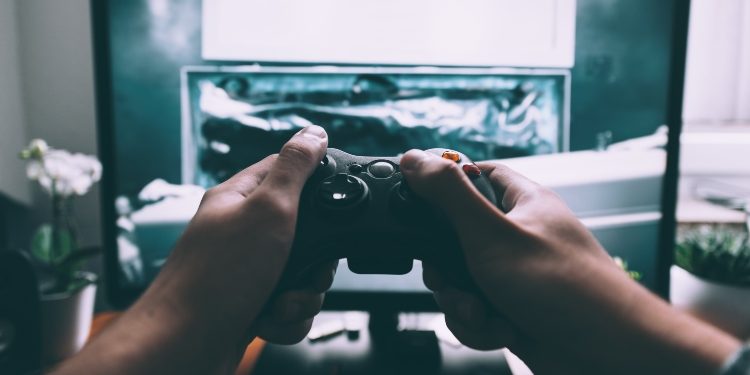In the ever-evolving world of video game development, managing costs effectively while maintaining high quality has become a paramount challenge. For video game developers, one key strategy for balancing these priorities is outsourcing art production. Engaging a game art outsourcing studio offers a practical solution to reduce expenses without compromising the artistic integrity or quality of the game. This comprehensive blog post delves into the ways in which outsourcing art can be a cost-effective approach for game developers.
Understanding the Costs in Game Development
The process of developing a video game involves various stages, each with its own set of costs. These include conceptualization, design, art creation, programming, testing, and marketing. Among these, art creation is one of the most resource-intensive phases, requiring a significant amount of time, talent, and financial investment. This phase involves character design, environment creation, animation, UI/UX design, and more.
The Financial Implications of In-House Art Development
When video game developers opt for in-house art development, they incur a range of expenses. This includes hiring full-time artists, purchasing necessary software and hardware, and allocating resources for ongoing training and development. The costs can escalate quickly, especially for small to medium-sized developers or those working on projects with tight budgets.
How Outsourcing Art Reduces Expenses
- Reduced Labor Costs
Outsourcing to a game art outsourcing studio typically involves lower labor costs compared to maintaining an in-house team. This is because outsourcing studios often operate in regions with lower living costs, allowing them to offer competitive rates without sacrificing quality.
- No Need for Specialized Recruitment
Recruiting skilled artists is a time-consuming and expensive process. An outsourcing studio already has a team of experienced artists, saving video game developers the costs and efforts associated with recruitment.
- Elimination of Training and Upgrading Costs
Keeping an in-house team up-to-date with the latest software and techniques requires ongoing training and investment in new technologies. An outsourcing studio, on the other hand, manages its own training and upgrades, eliminating these costs for the developer.
- Flexibility and Scalability
Game development often experiences peak periods of art production needs. An outsourcing studio can scale up or down based on the project’s requirements, offering flexibility that is more cost-effective than maintaining a large in-house team during slower periods.
- Reduced Overhead Expenses
In-house art production necessitates additional overhead expenses such as workspace, utilities, and equipment. By outsourcing, these overhead costs are significantly reduced as the outsourcing studio bears these expenses.
Maximizing the Benefits of Outsourcing Art
While outsourcing art can indeed be cost-effective, maximizing its benefits requires a strategic approach. Here are some key strategies:
Clear Communication and Detailed Briefs
Effective communication is crucial in ensuring that the outsourcing studio fully understands the project’s vision and requirements. Providing detailed briefs and being clear about expectations can prevent costly revisions and delays.
Choosing the Right Outsourcing Partner
Selecting an outsourcing studio that aligns with the game’s style and has a proven track record is essential. Assess their portfolio, client testimonials, and past projects to ensure they are a good fit.
Establishing a Collaborative Workflow
Setting up a collaborative and efficient workflow is key. This includes regular updates, feedback sessions, and utilizing collaborative tools to keep the project on track.
Mitigating Risks through Contracts and Agreements
Protecting intellectual property and ensuring confidentiality is critical. Have clear contracts and non-disclosure agreements in place to mitigate any risks associated with outsourcing.
Success Stories of Outsourcing Art in Game Development
Numerous successful games have leveraged the advantages of outsourcing art. For example, many AAA titles outsource certain aspects of art production to manage costs effectively while focusing their in-house teams on core development aspects. Similarly, indie developers have significantly benefited from outsourcing, allowing them to create visually appealing games on limited budgets.
The Future of Outsourcing in Game Development
The trend of outsourcing art in game development is expected to grow. With advancements in communication technology and an increasing number of skilled outsourcing studios emerging globally, the process is becoming more streamlined and efficient. For video game developers, this presents an opportunity to produce high-quality games in a more cost-effective manner.
Conclusion
Outsourcing art production presents a viable solution for video game developers looking to manage costs effectively. By partnering with the right game art outsourcing studio, developers can reduce expenses, focus on core development aspects, and bring their creative visions to life without compromising quality. As the gaming industry continues to evolve, outsourcing will likely play an increasingly significant role in the development process, offering a strategic advantage in a competitive market.
David Prior
David Prior is the editor of Today News, responsible for the overall editorial strategy. He is an NCTJ-qualified journalist with over 20 years’ experience, and is also editor of the award-winning hyperlocal news title Altrincham Today. His LinkedIn profile is here.













































































